Forums
- Forums
- Duggy's Reference Hangar
- USAAF / USN Library
- XBLR-1/XB-15
XBLR-1/XB-15
Post a reply
- Go to Previous topic
- Go to Next topic
- Go to Welcome
- Go to Introduce Yourself
- Go to General Discussion
- Go to Screenshots, Images and Videos
- Go to Off topic
- Go to Works in Progress
- Go to Skinning Tips / Tutorials
- Go to Skin Requests
- Go to IJAAF Library
- Go to Luftwaffe Library
- Go to RAF Library
- Go to USAAF / USN Library
- Go to Misc Library
- Go to The Ops Room
- Go to Made in Germany
- Go to Campaigns and Missions
- Go to Works in Progress
- Go to Juri's Air-Raid Shelter
- Go to Campaigns and Missions
- Go to Works in Progress
- Go to Skinpacks
- Go to External Projects Discussion
- Go to Books & Resources
-
10 years agoSun Oct 12 2025, 10:01amDuggy
 Main AdminIn April 14, 1934, the Army Air Corps issued a request for a long-range bomber. A 5000 mile range with a 2000-pound bombload was envisaged.
Main AdminIn April 14, 1934, the Army Air Corps issued a request for a long-range bomber. A 5000 mile range with a 2000-pound bombload was envisaged.
The Boeing Airplane Company submitted its Model 294 in response to this requirement. The Army expressed sufficient interest in the Model 294 that it issued a contract on June 28, 1934 for design data, wind-tunnel tests, and the construction of a mockup under the designation XBLR-1, the letters standing for "Experimental Bomber, Long Range". On June 29, 1935, a contract was approved for one example of the XBLR-1. The BLR category was later eliminated, and the aircraft was redesignated XB-15 in July 1936.
The XB-15 was a large, four-engined mid-wing cantilever monoplane with all-metal semi-monocoque construction. The structure was generally similar to that of earlier Boeing monoplanes that had been based on the Monomail design, with the exception that the wing from the main spar aft was covered with fabric instead of metal. The XB-15 was originally to have been powered by four Allison V-1710 liquid cooled V-12 engines. However, before the aircraft was built, the powerplants were changed to four 1000 hp Pratt & Whitney R-1830 twin-row air-cooled radials.
The crew of ten has soundproofed, heated, and ventilated quarters with rest bunks, a kitchen, and a lavatory. For the first time in an airplane, small auxiliary engines were fitted which powered a 110-volt electrical system. The wing was so thick at the root that it was possible for a crew member to service the engine accessory sections in flight from a passageway extending behind the nacelles. Such a system later appeared on the Boeing Model 314 flying boat. The main undercarriage retracted into the rear of the inner engine nacelle. The aircraft was sufficiently heavy that it was necessary to fit two wheels on each main undercarriage truck.
The defensive armament was the heaviest yet to be fitted to a bomber. It carried six machine guns. One of these guns was mounted in a nose turret and another one was carried in a forward-facing belly turret mounted below the pilot's cabin. A 0.50-inch gun was mounted in a top turret which could rotate through 360 degrees. One gun was carried in each of two waist blisters attached to the fuselage behind the wings. A sixth gun was housed inside a rearward-facing belly turret.
Below cockpit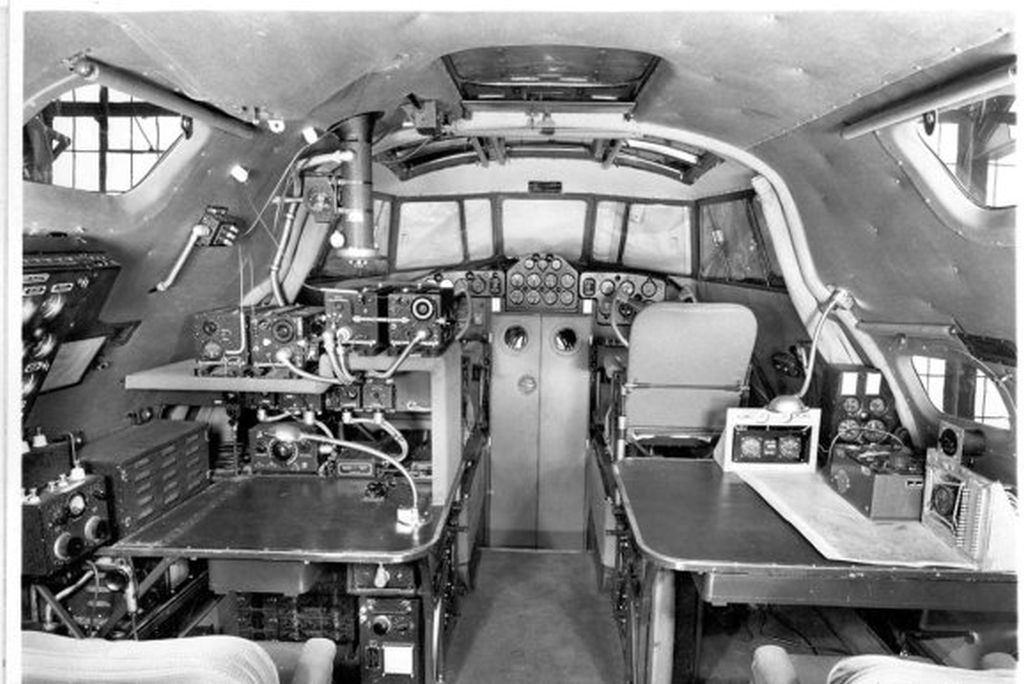
below right rear .30-cal. gun installation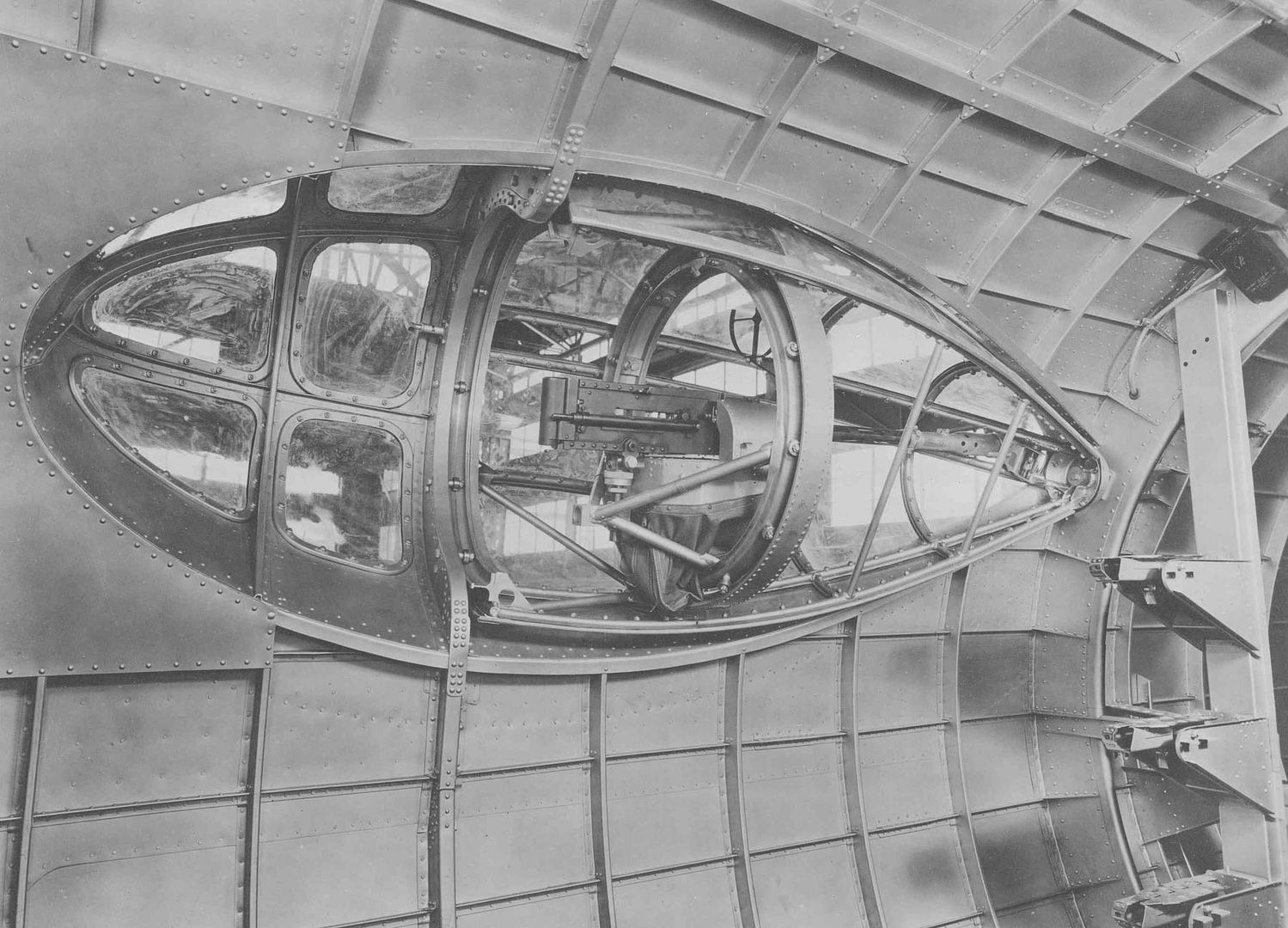
Below top turret .50-cal. gun installation.
Below front turret .50-cal. gun installation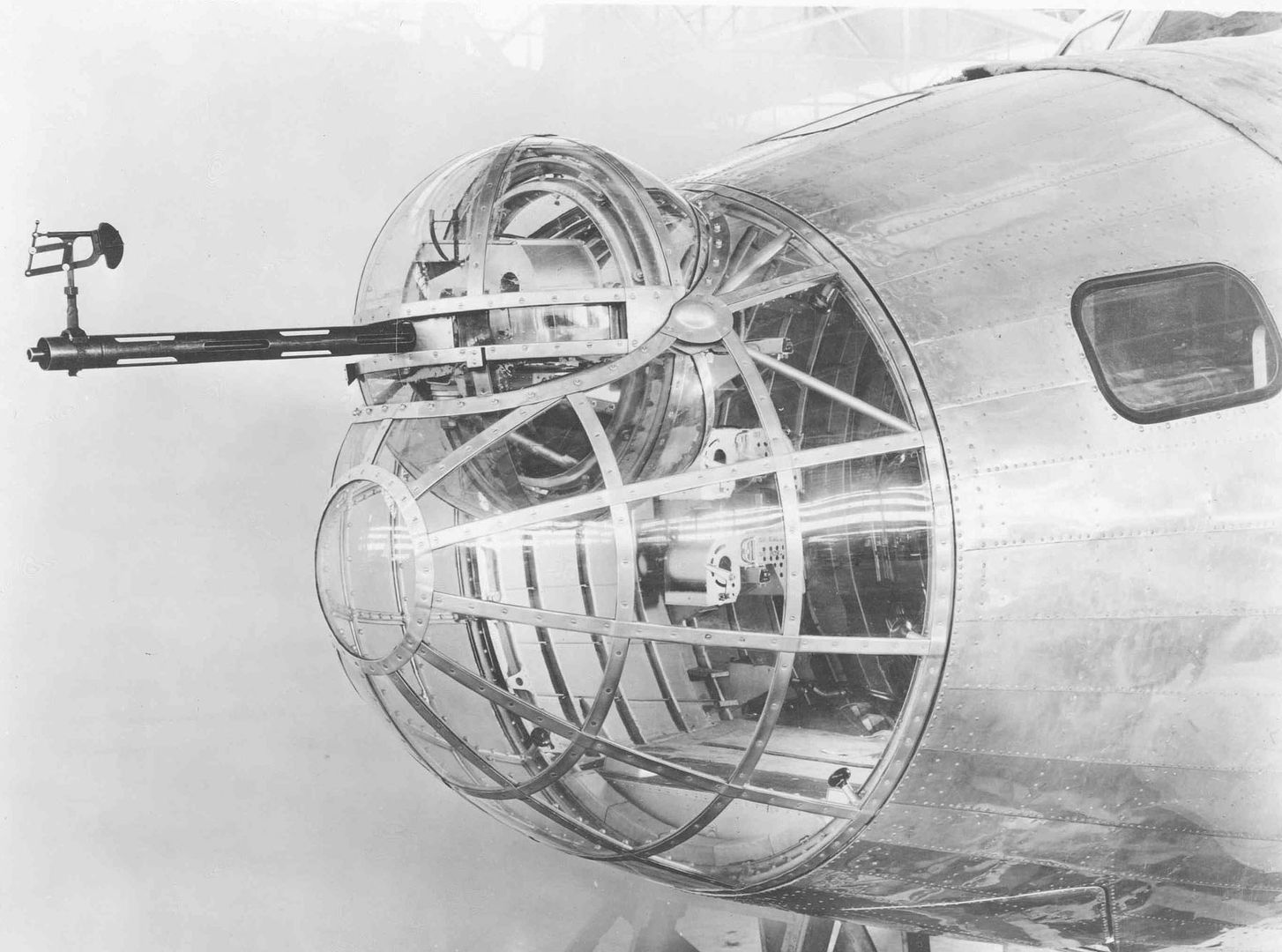
Although it was an older design than the Model 299 which eventually emerged as the B-17 and carried an earlier military designation, the XB-15 made its first flight two years later. The XB-15 (serial number 35-277) made its first flight on October 15, 1937 with Eddie Allen at the controls. At the time of its appearance, it was the largest and heaviest aircraft yet to be built in the United States.
The XB-15 proved to be seriously underpowered with the R-1830 radials. Because of its low performance as compared to later aircraft (the top speed was only 197 mph), the XB-15 was never ordered into production, and the prototype was the only example to be built.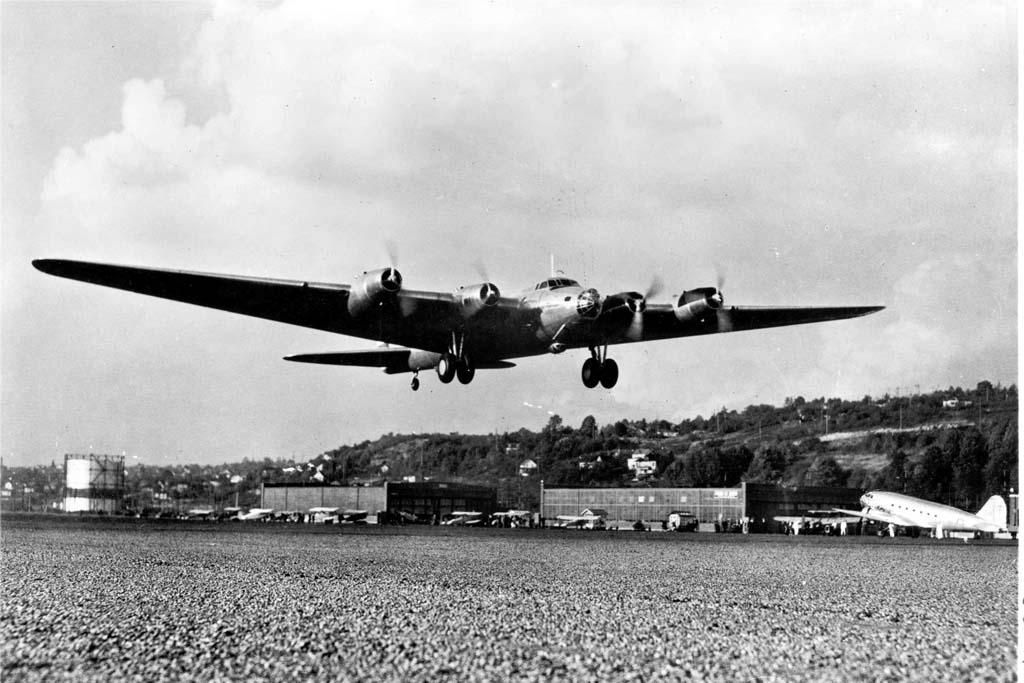

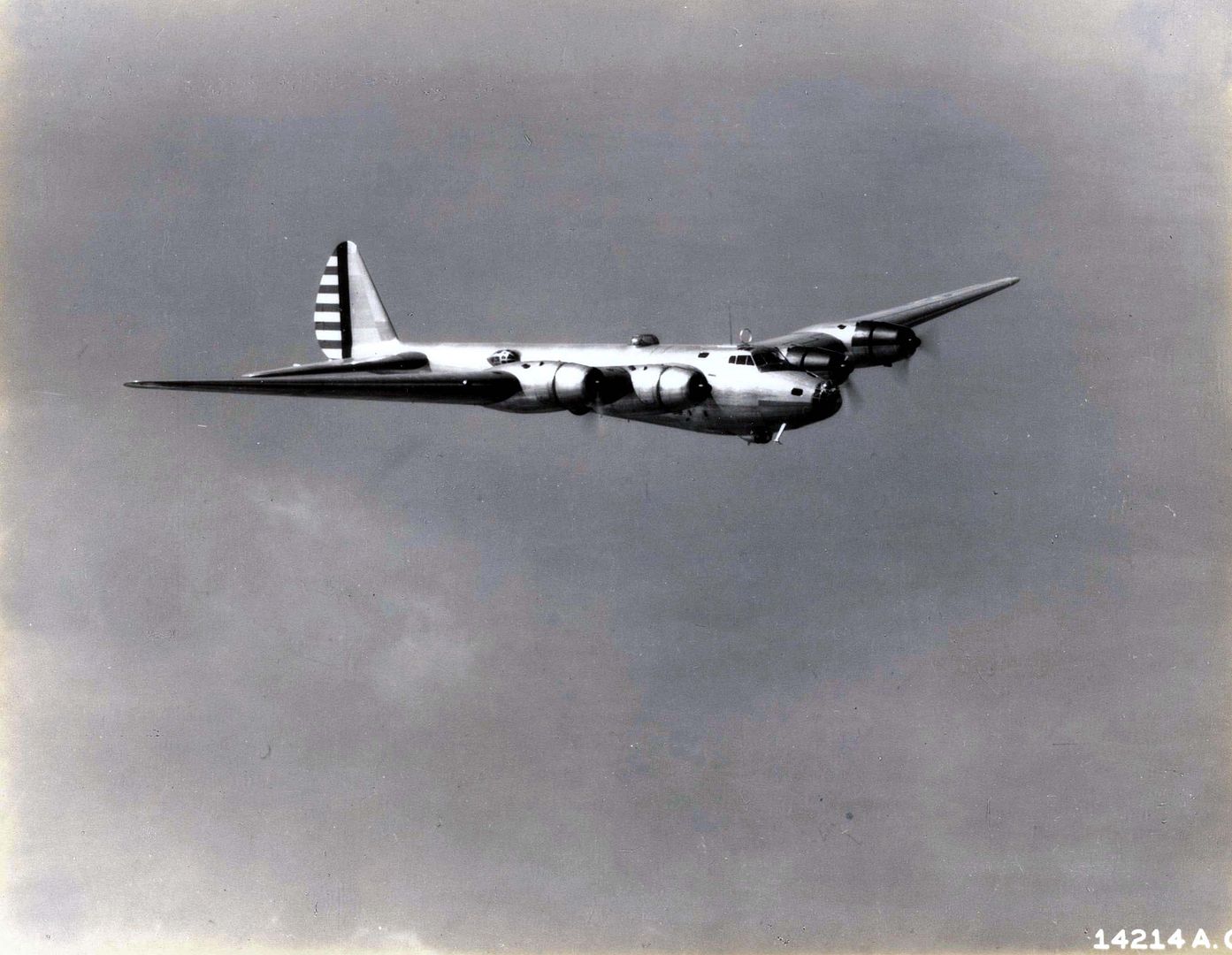


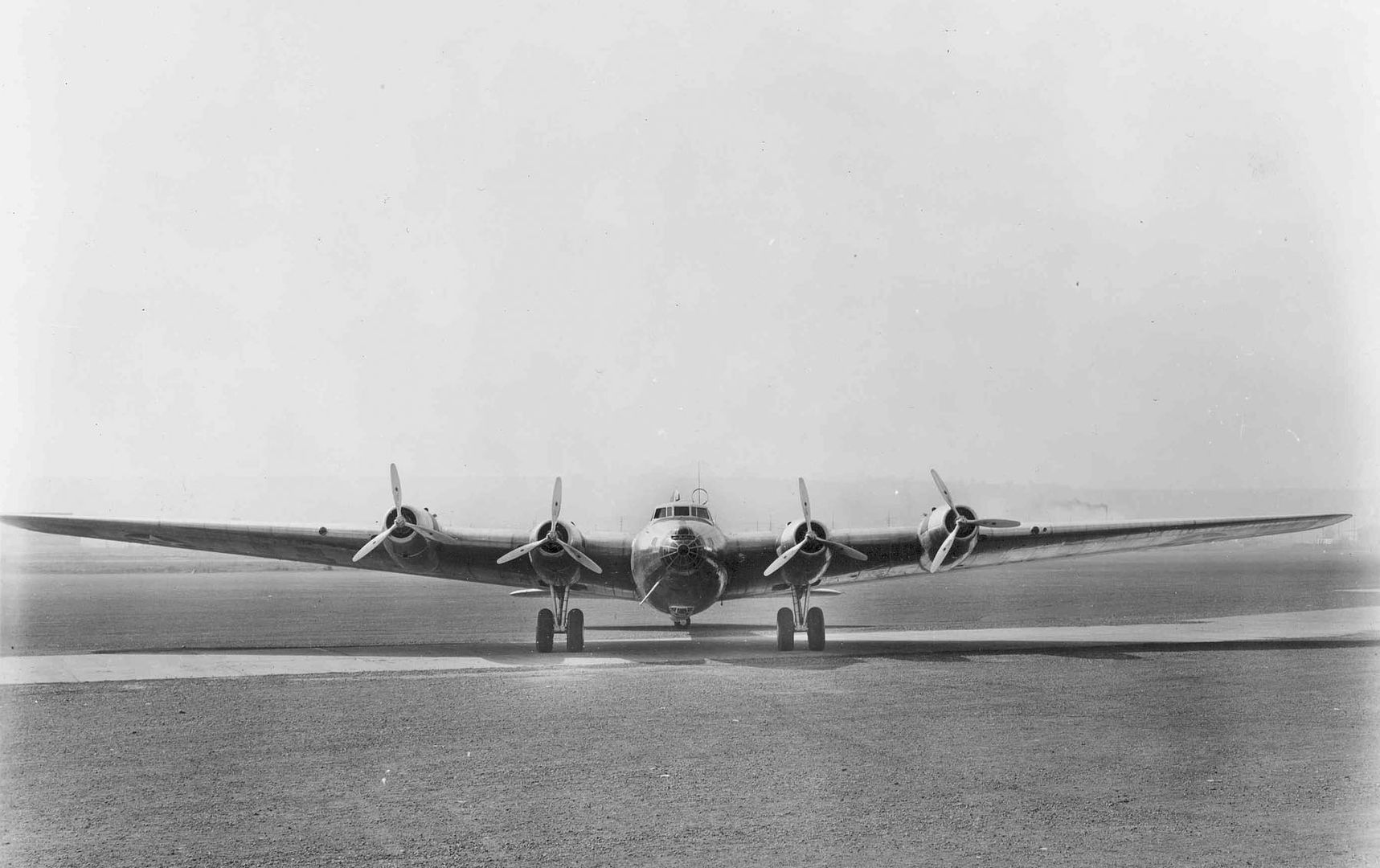


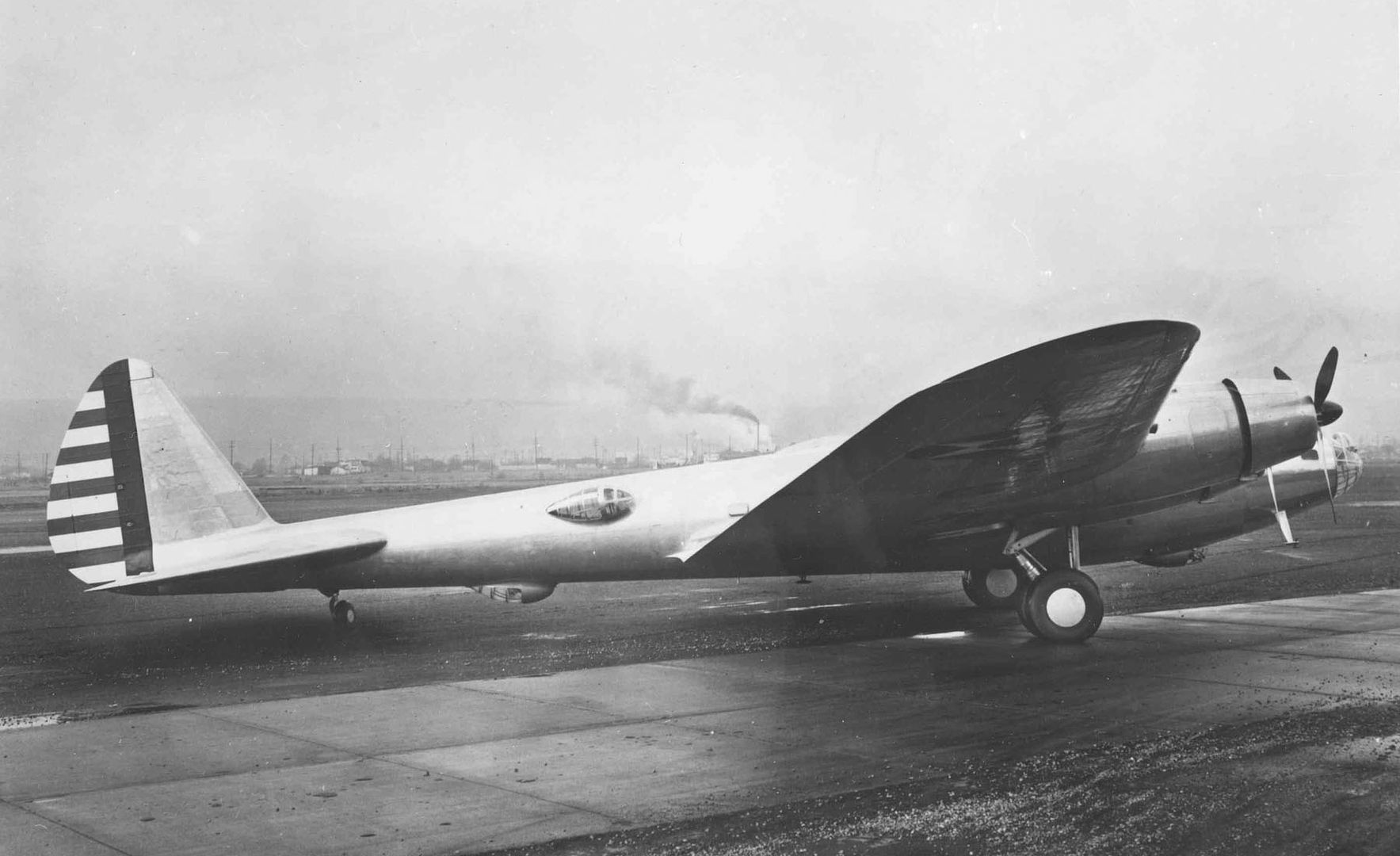
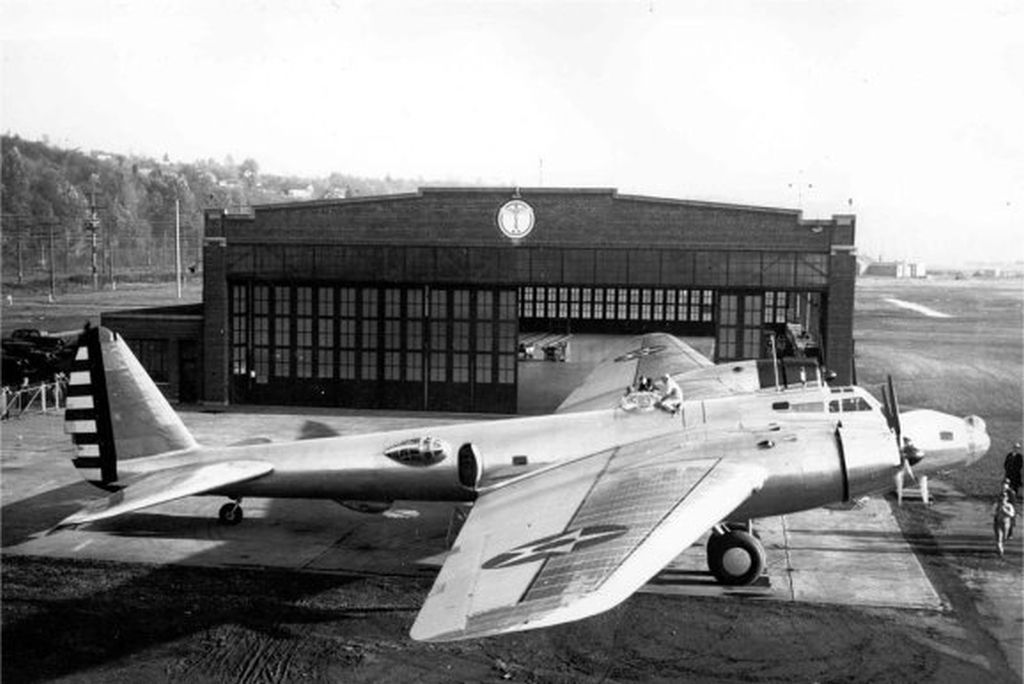
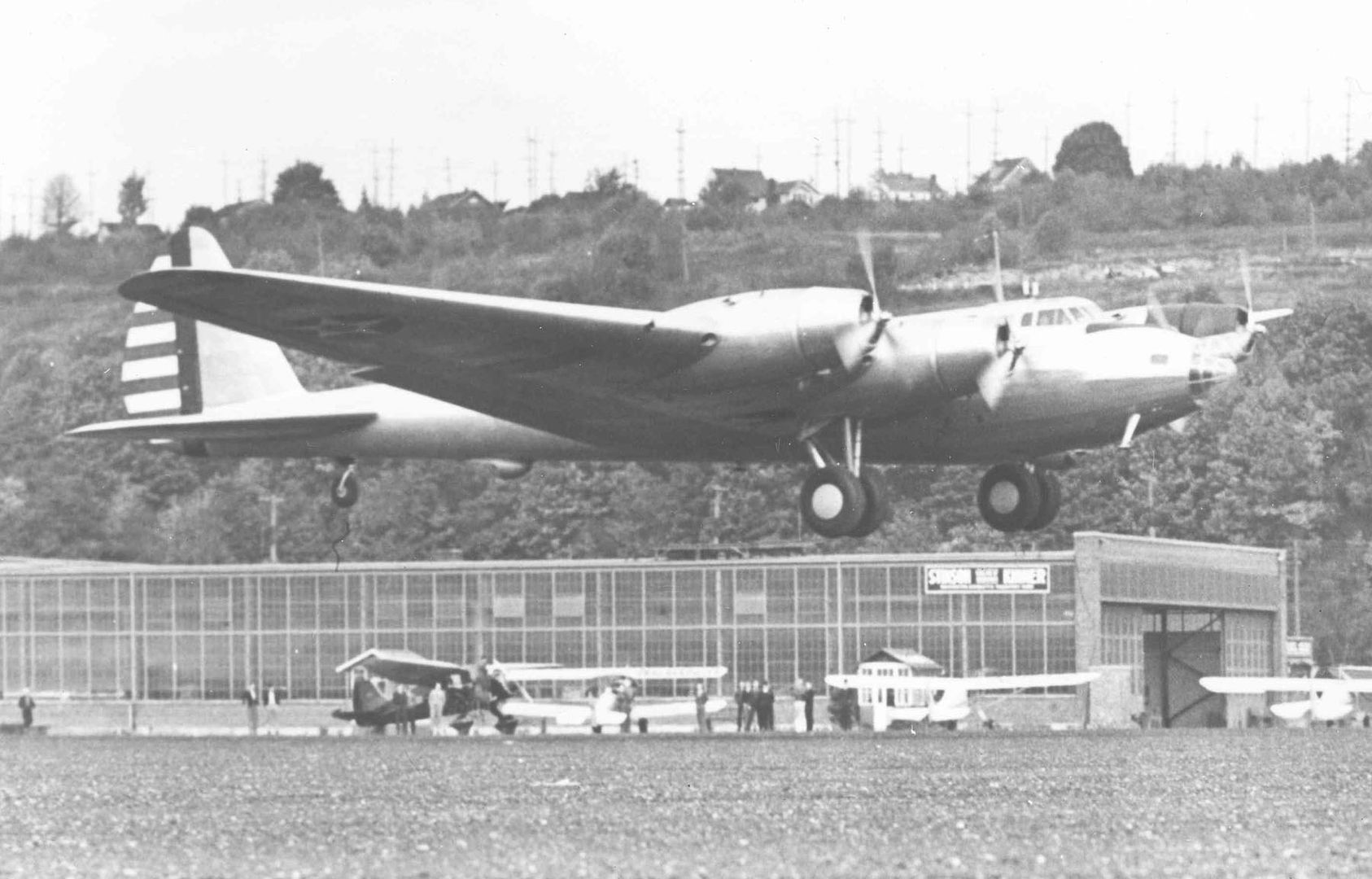

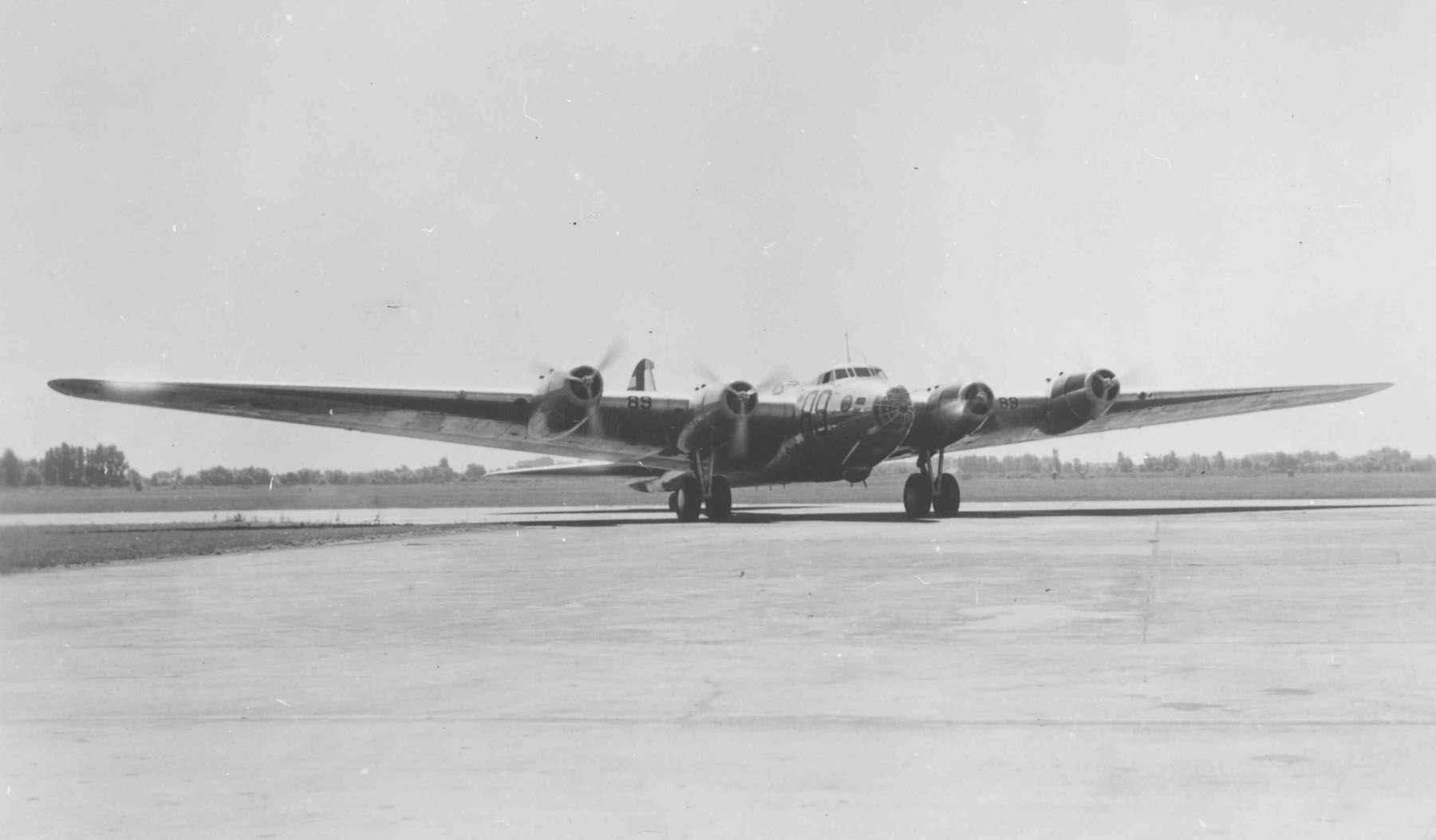
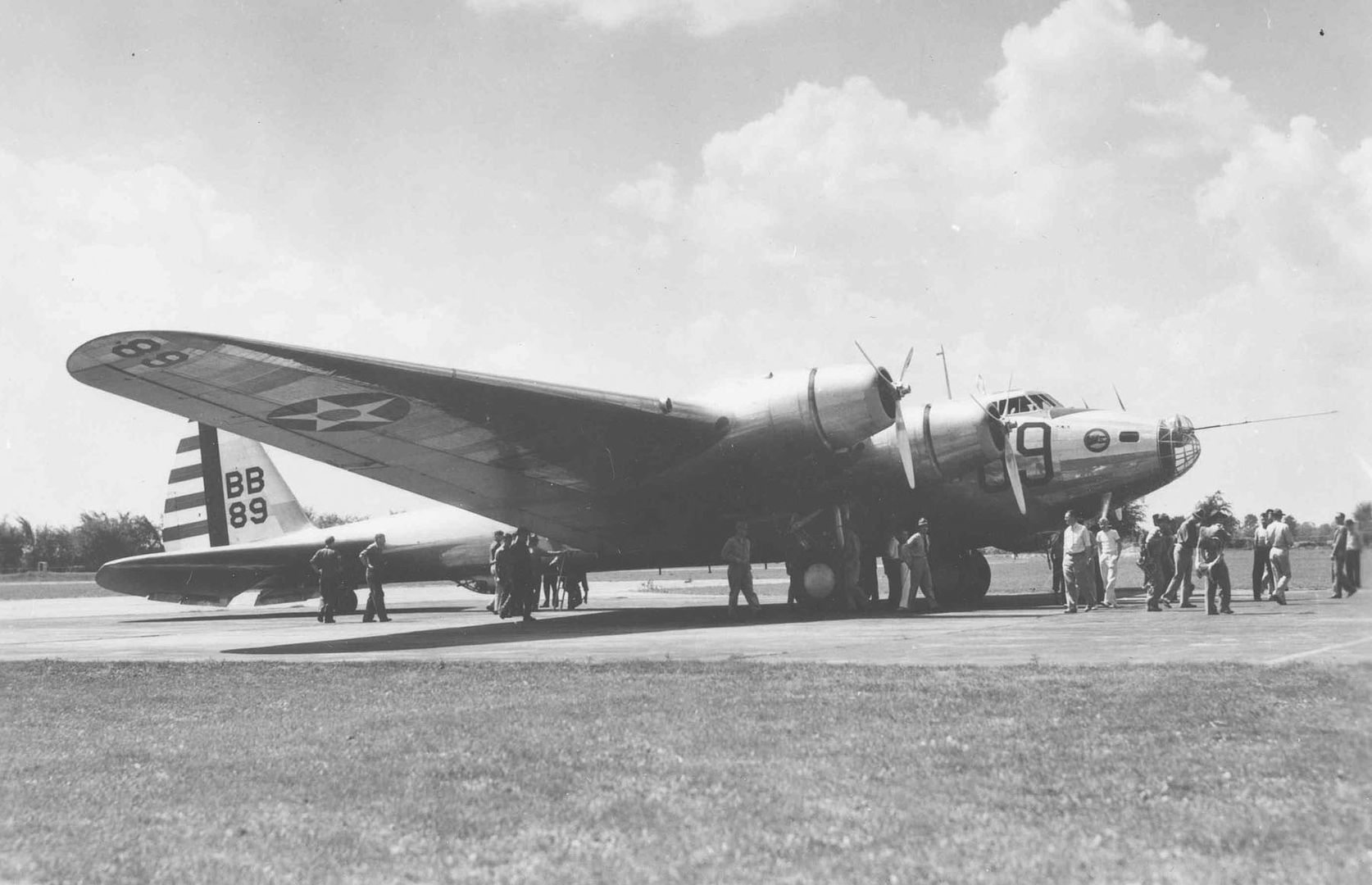
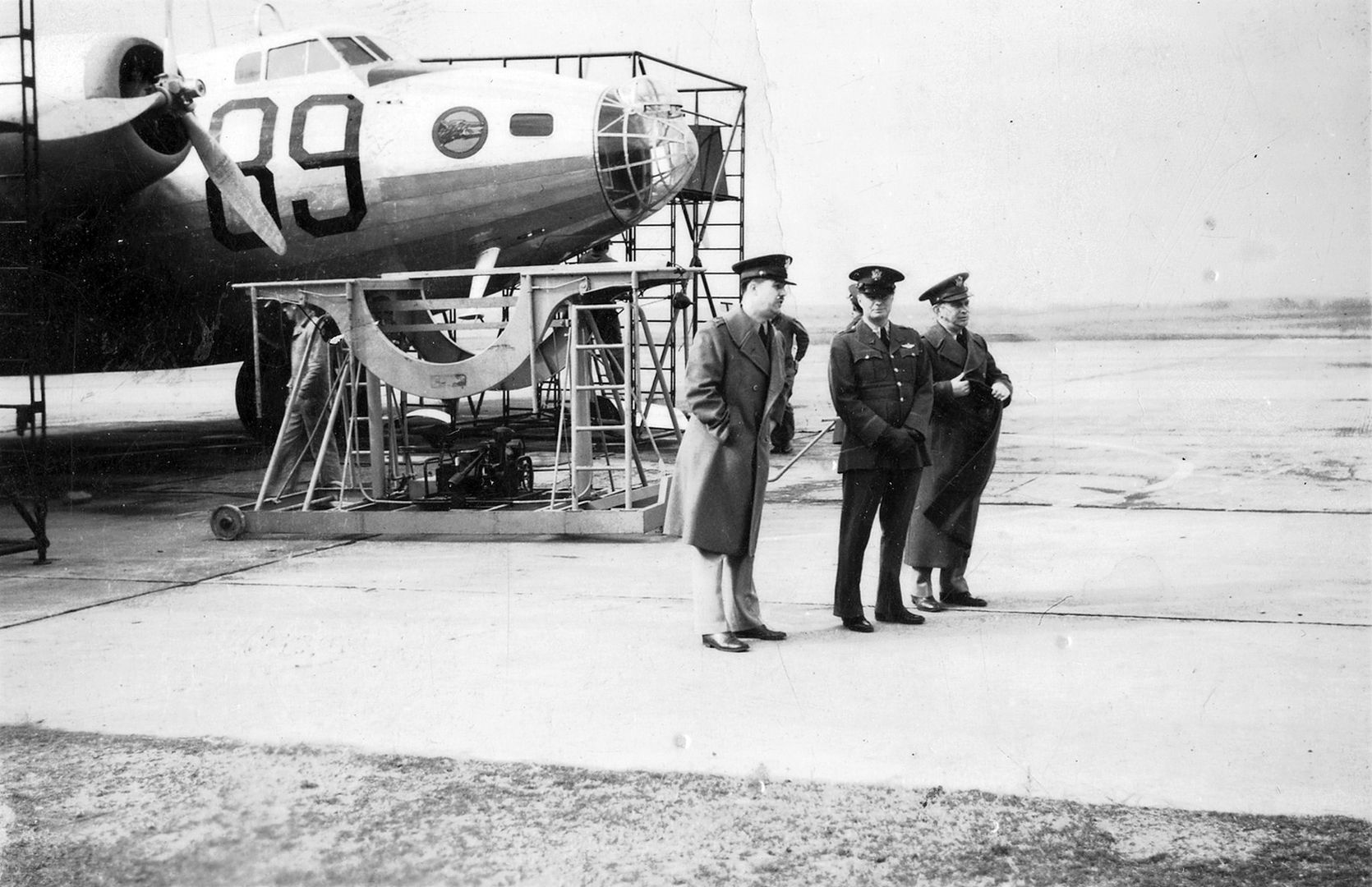
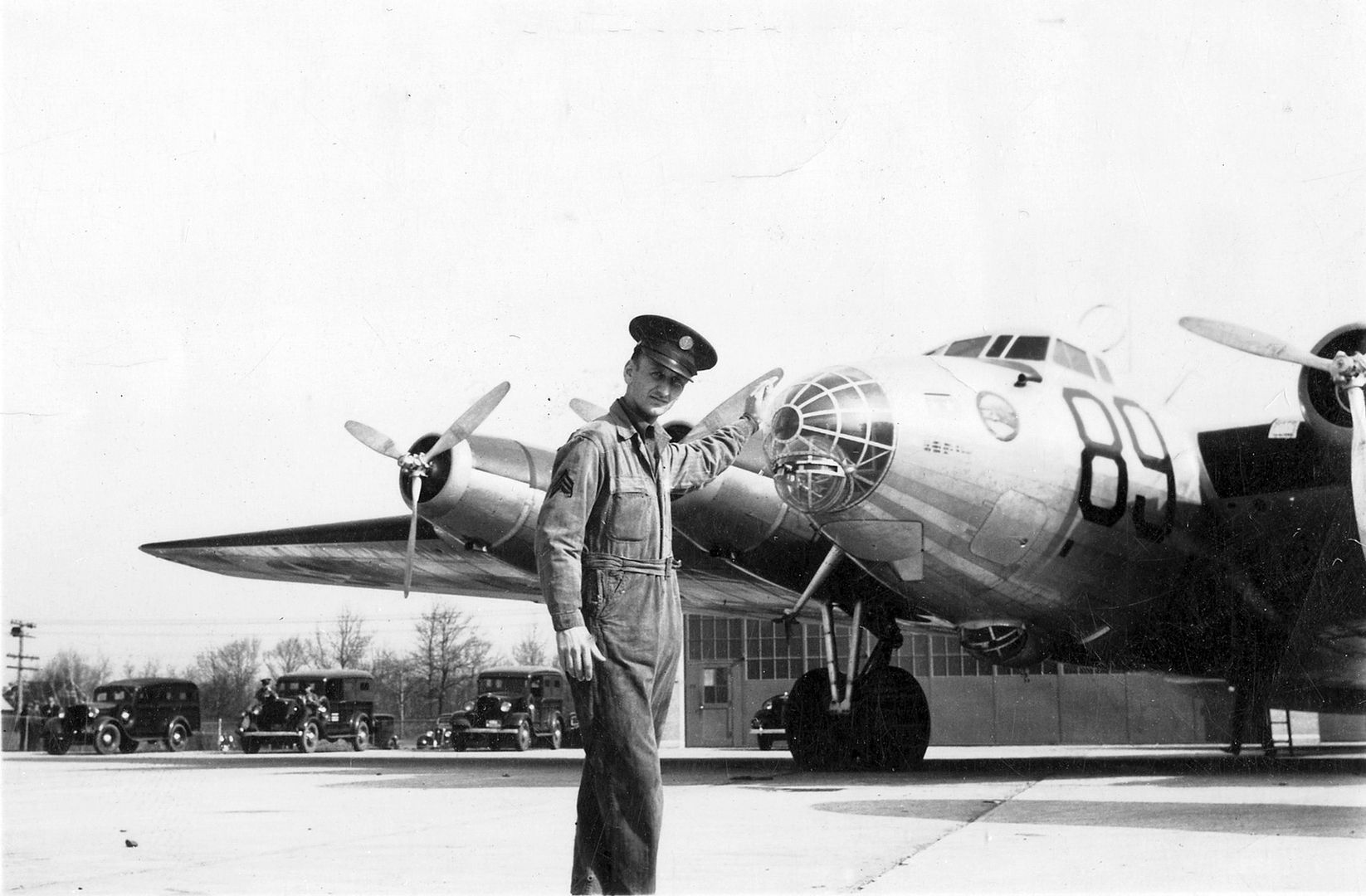
Following the completion of the tests, the XB-15 was turned over to the 2nd Bomb Group in August of 1938. In spite of the fact that the aircraft was seriously underpowered for its size, it did manage to set several world records for weight carrying, including a 71,167-pound payload lifted to 8200 feet on July 30, 1939 and a payload of 4409 pounds carried over a distance of 3107 miles at 166 mph.
The "Aquabelles" from the New York Worlds Fair of 1939 and Army Air Corps officers pose on the wing of Boeing's experimental XB-15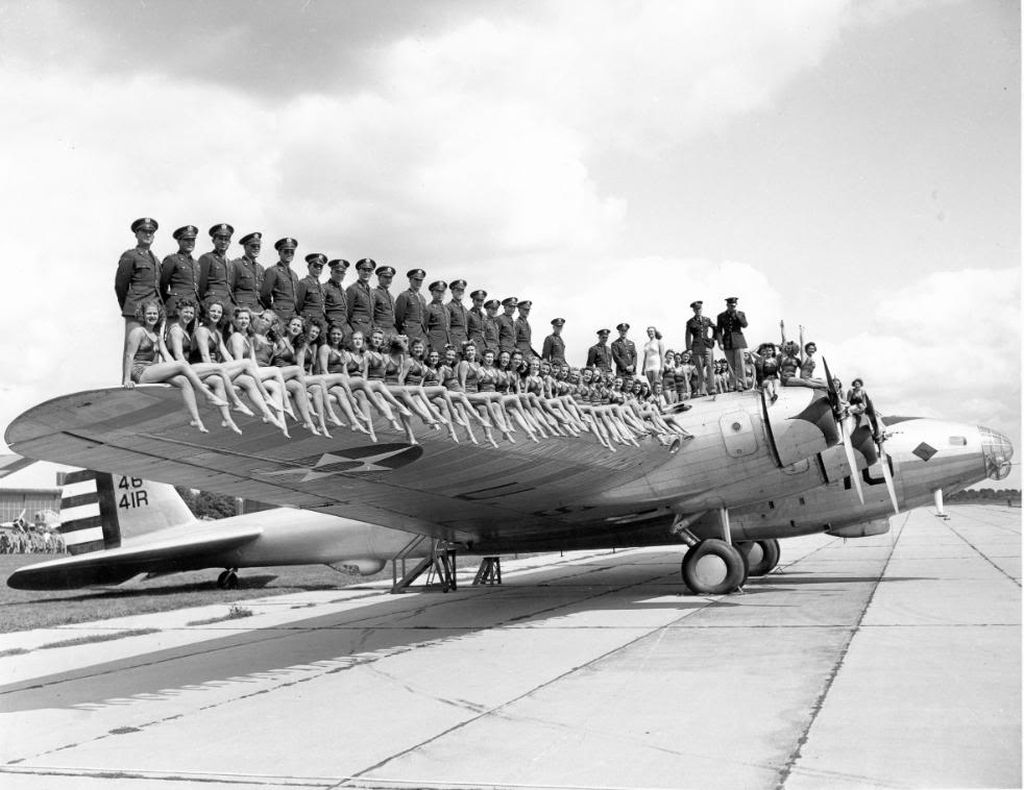
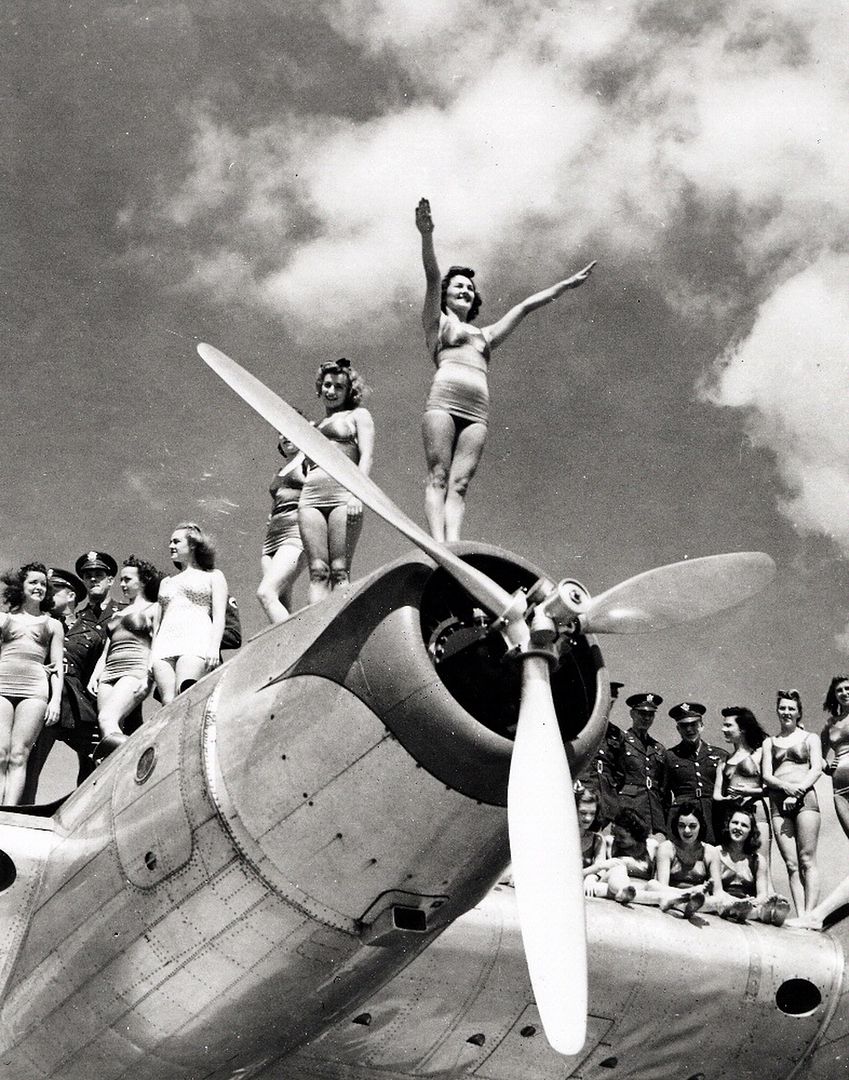
Below in formation with a Boeing YP-29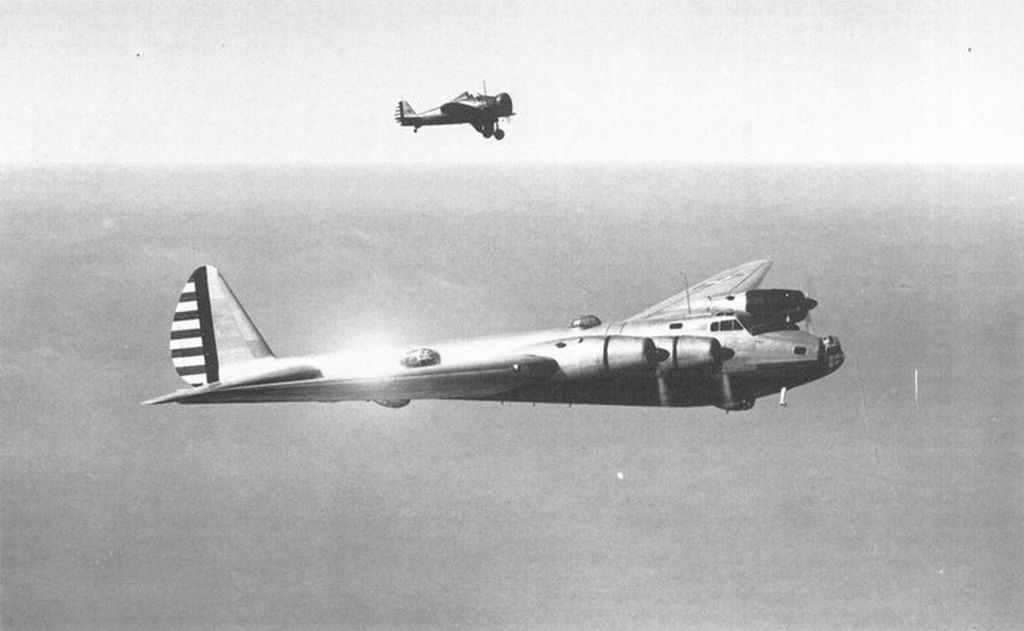

Below in flight over the Wright Memorial at Kitty Hawk N.C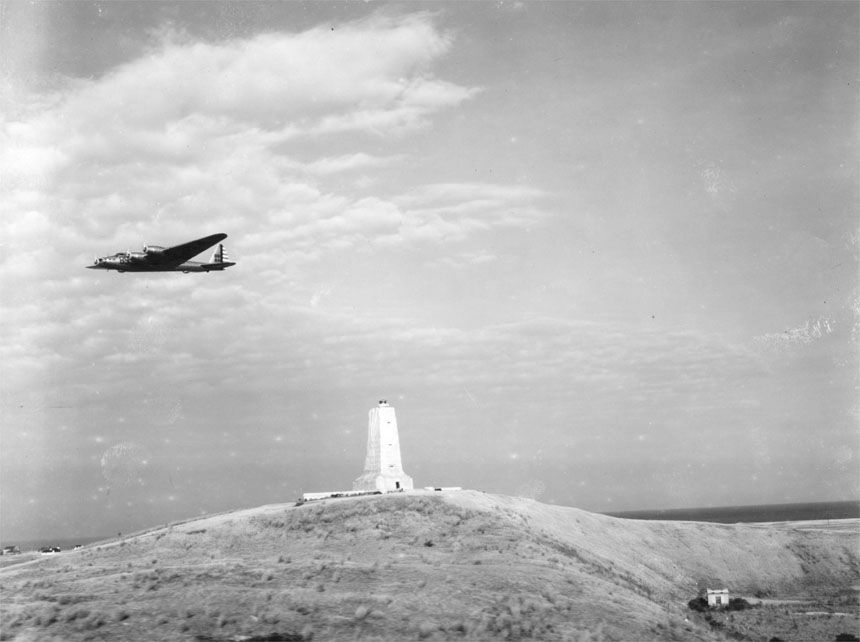
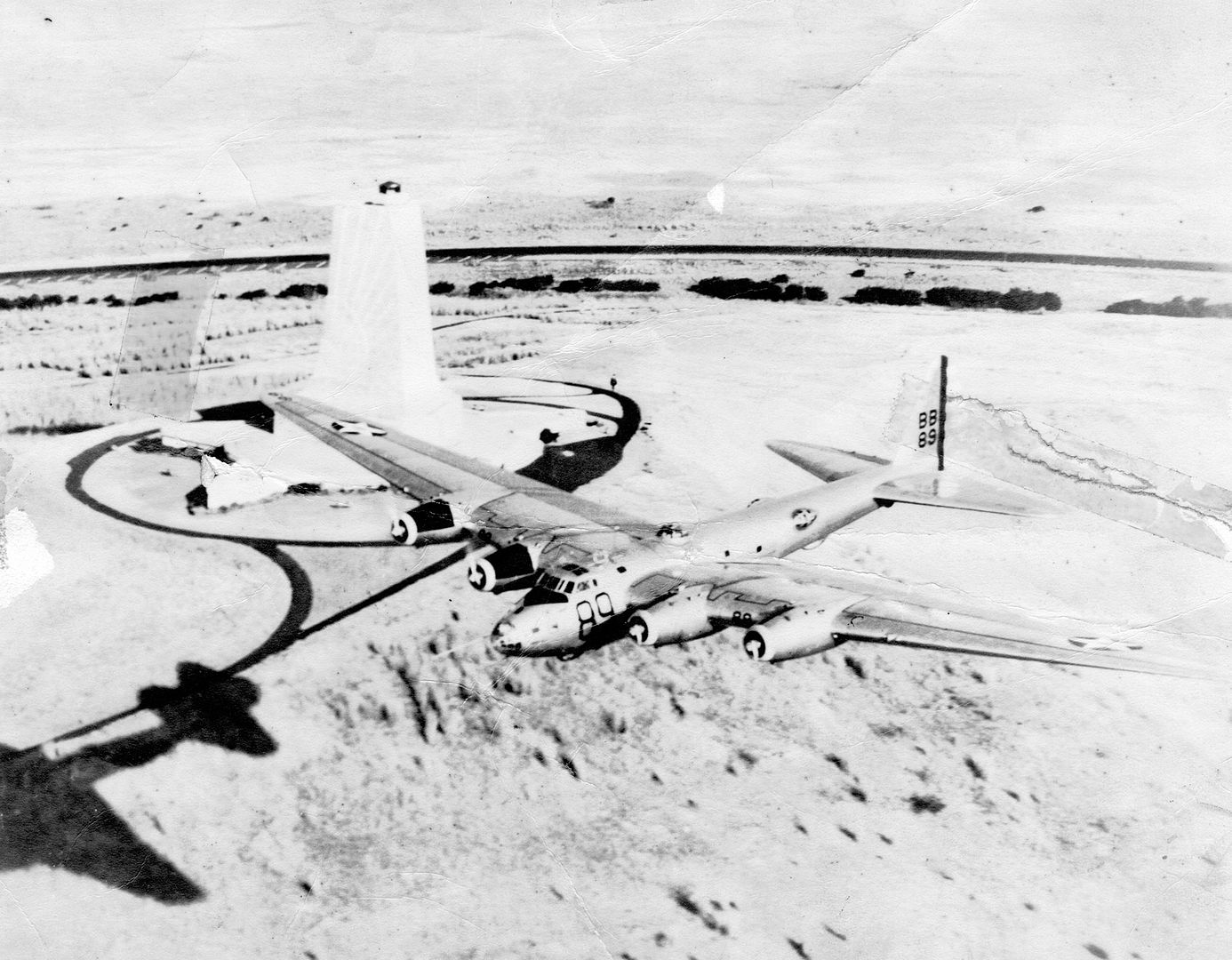
On 6 May 1943 the Army Air Forces converted the only prototype into a transport, the aircraft being redesignated XC-105. A cargo hoist was mounted, and cargo doors fitted. Its maximum gross weight was increased to 92,000 lb (42,000 kg). By this time, the aircraft was nicknamed "Grandpappy" by 20th Troop Carrier Squadron airmen. It displayed nose art depicting an elephant carrying on its back a large crate labeled "supplies". During World War II, the XC-105 carried freight and personnel to and from Florida, and throughout the Caribbean, based out of Albrook Field beginning in June 1943. Hundreds of young women were flown in "Grandpappy" from Miami to the Canal Zone to engage in US government work; these trips were dubbed the "Georgia Peach Run"."Grandpappy" traveled to the Galapagos, landing on Baltra Island at the same airfield built following the XB-15 aerial survey of May 1940.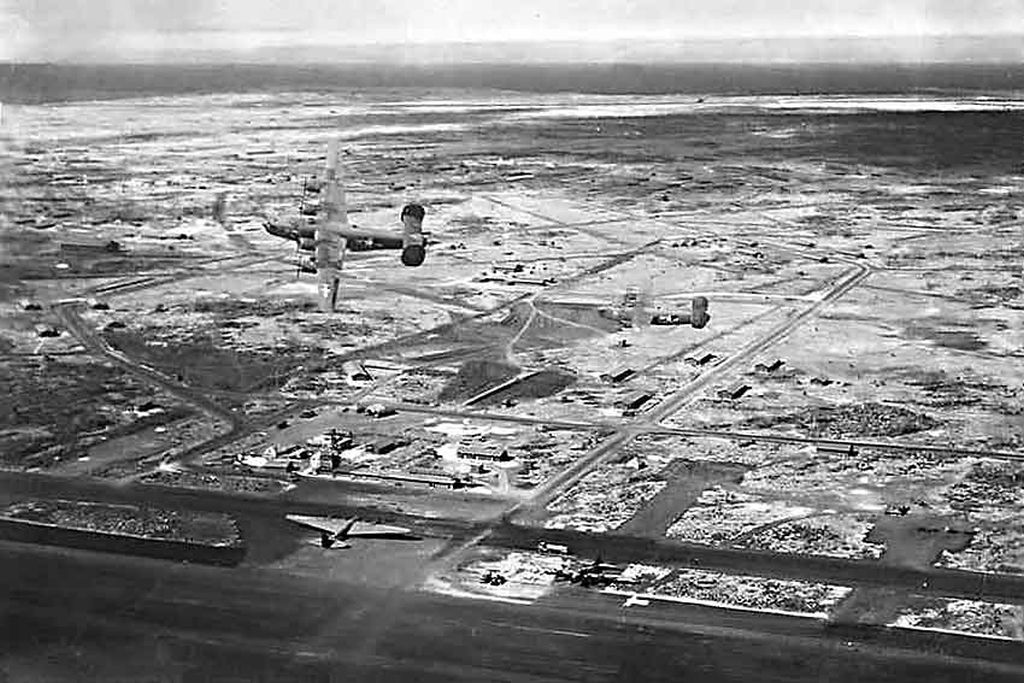
"Grandpappy"?s flight crew, reduced to six men, described the aircraft as difficult to fly and service. Two fires and a complete failure of the electrical system occurred in the air.The aircraft was retired on 18 December 1944, assigned to Panama Air Depot. In June 1945, it was ordered to be scrapped at Albrook Field in Panama, its engines and internal parts removed along with its vertical stabilizer and rudder. The remaining airframe was deposited at Diablo dump, a swampy landfill southwest of the runway, where it slowly sank from sight. Squatters built shacks on stilts in the swamp, covering the remains. The former dump is now an industrial area, with "Grandpappy" underneath.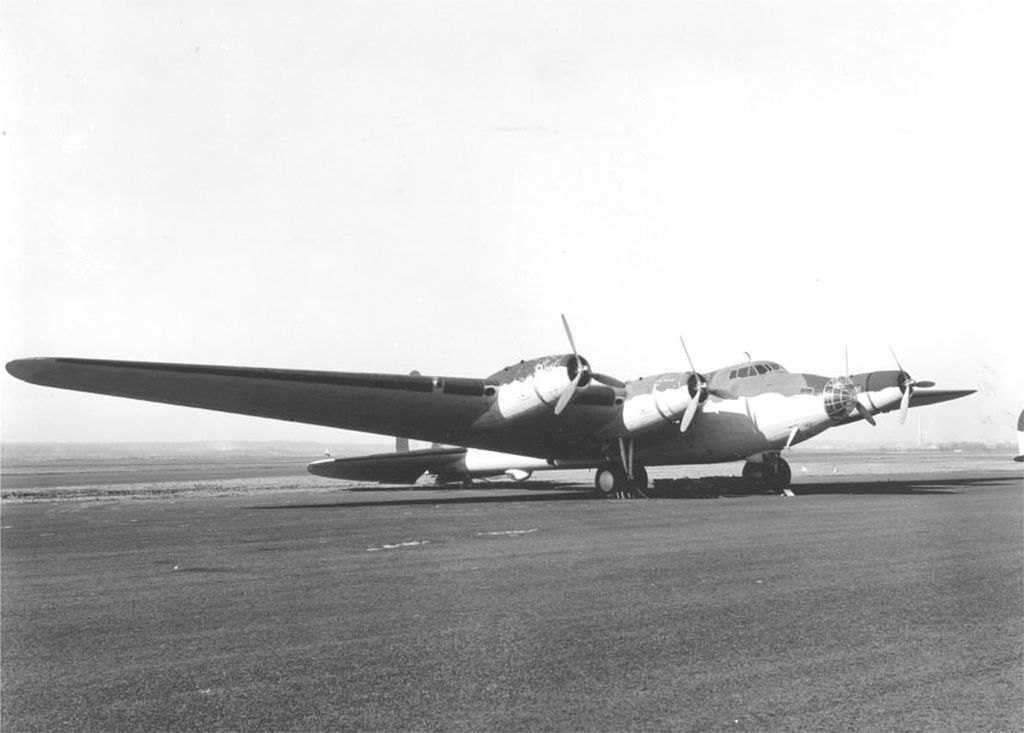

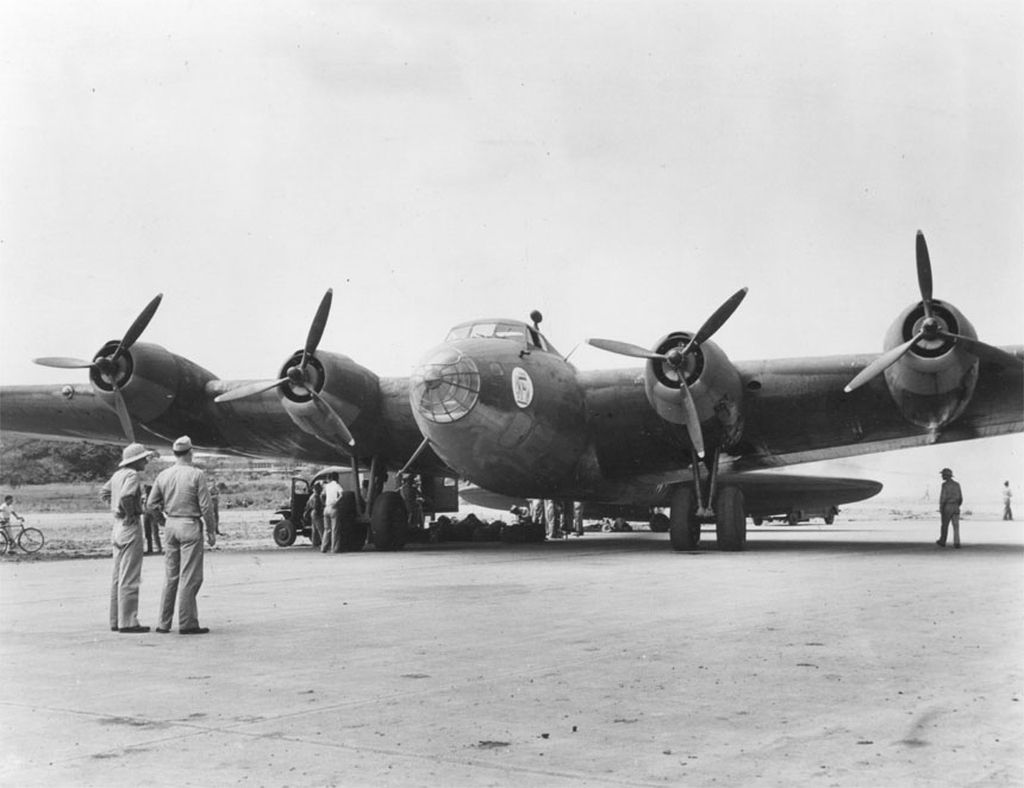


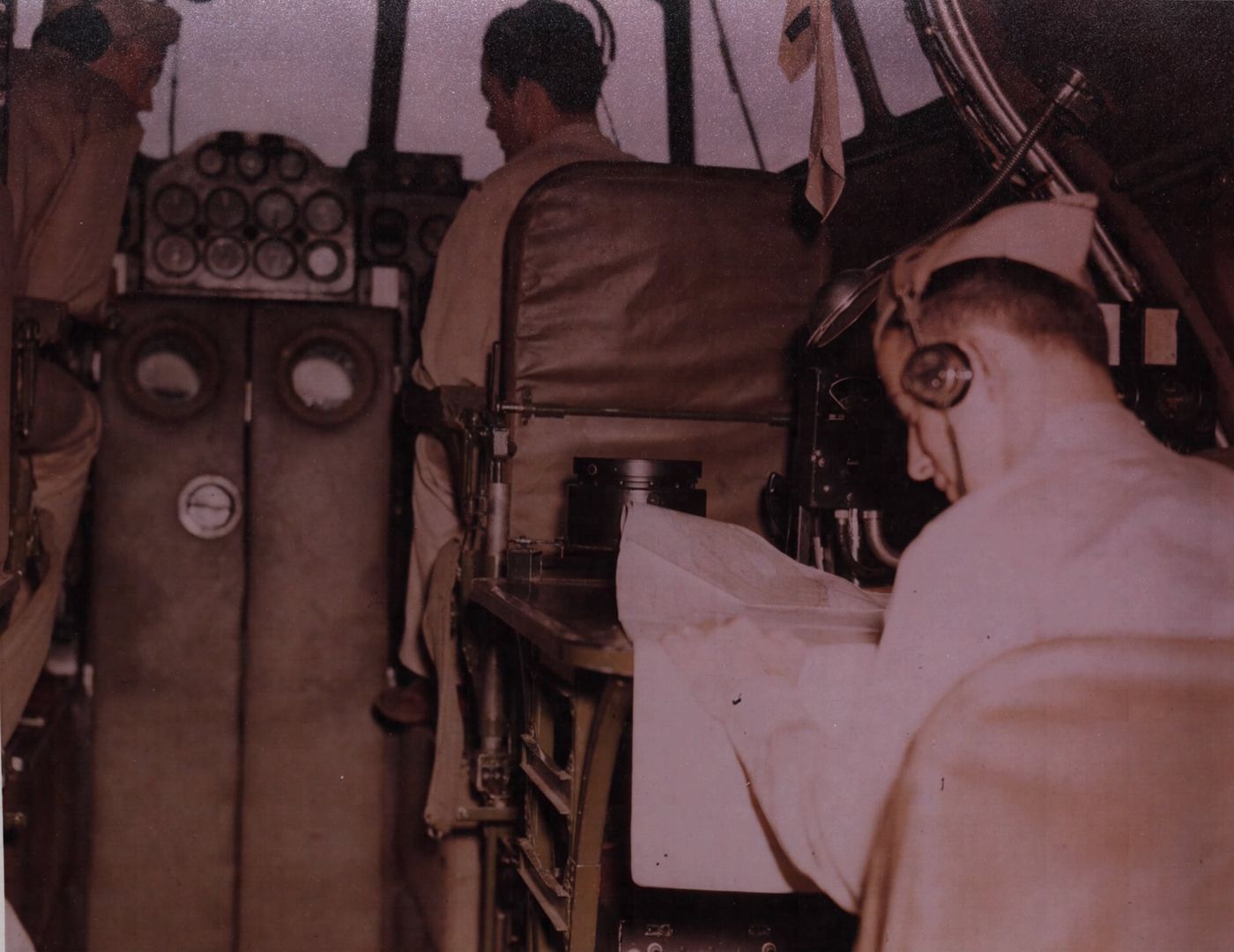
.jpg?width=1920&height=1080&fit=bounds)

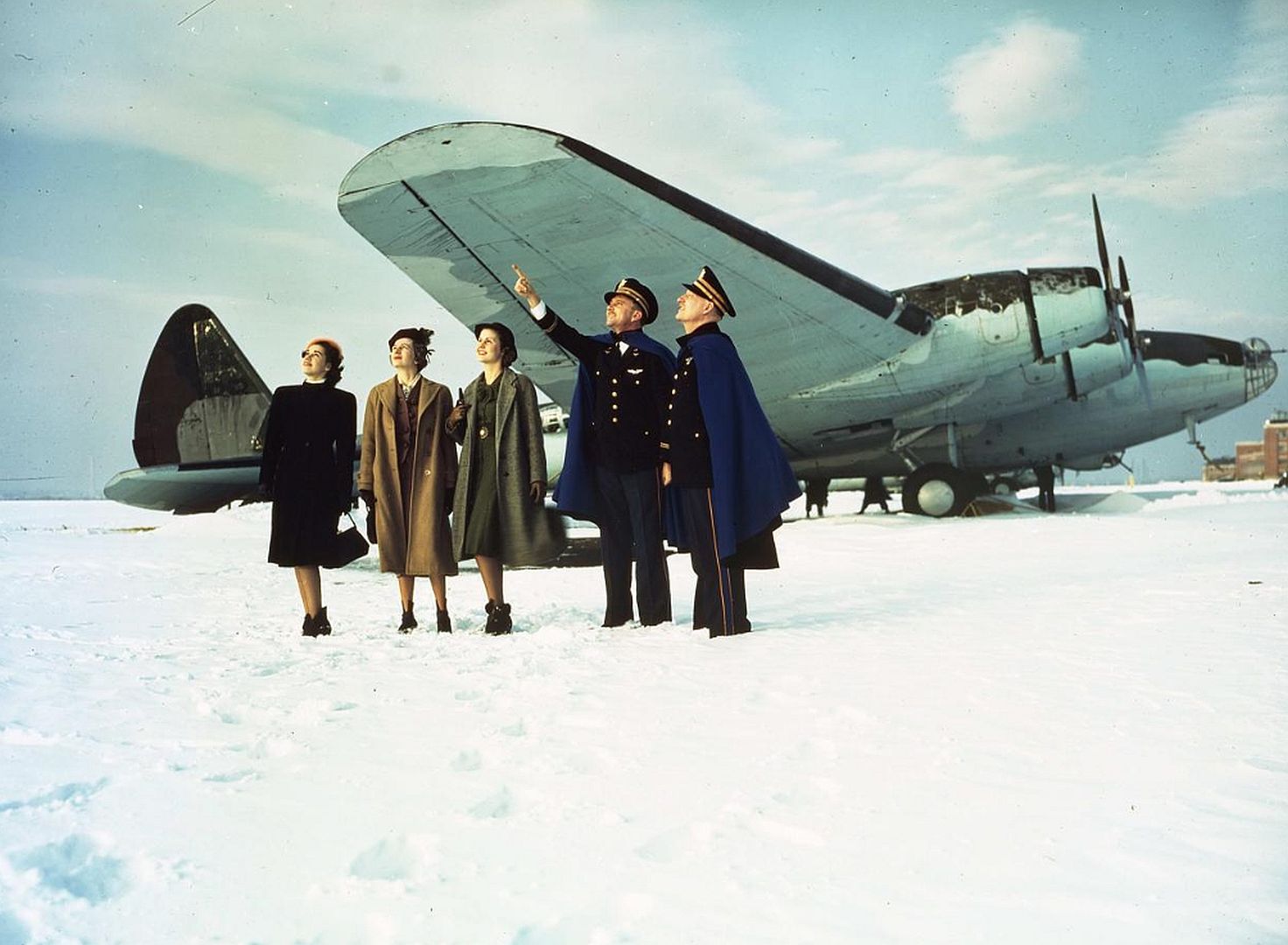
During its 18 months of transport service, the XC-105 carried more than 5,200 passengers, 440,000 lb (200,000 kg) of cargo and 94,000 lb (43,000 kg) of mail. It flew 70 cargo trips and 60 missions including anti-submarine patrol. Unusually, the aircraft was consistently referred to as "he" by its crew.
Two service test models of the XB-15 were ordered under the designation Y1B-20. In an attempt to provide more power, these planes were to have been powered by 1400 hp Pratt & Whitney R-2180 radials. However, they were cancelled before anything could be built.
Specification of XB-15:
Four Pratt & Whitney R-1830-11 Twin Wasp air cooled radials, rated at 850 hp at 2450 rpm at 5000 feet, and 1000 hp for takeoff. Maximum speed: 200 mph at 5000 feet, 197 mph at 6000 feet, cruising speed 152 mph at 60 percent power at 6000 feet. Service ceiling 18,900 feet, absolute ceiling 20,900 feet. Climb to 5000 feet in 7.1 minutes, climb to 10,0000 feet in 14.9 minutes. Range 3400 miles with 2511 pounds of bombs, maximum range 5130 miles. Weights: 37,309 pounds empty, 65,068 pounds gross, 70,706 pounds maximum. Dimensions: wingspan 149 feet, length 87 feet 7 inches, height 18 feet 1 inches, wing area 2780 square feet. Armed with two 0.50-inch and four 0.30-inch machine guns. A bomb load of four 2000 pound bombs could be carried. Maximum bombload was 12,000 pounds.
Post a reply
- Go to Previous topic
- Go to Next topic
- Go to Welcome
- Go to Introduce Yourself
- Go to General Discussion
- Go to Screenshots, Images and Videos
- Go to Off topic
- Go to Works in Progress
- Go to Skinning Tips / Tutorials
- Go to Skin Requests
- Go to IJAAF Library
- Go to Luftwaffe Library
- Go to RAF Library
- Go to USAAF / USN Library
- Go to Misc Library
- Go to The Ops Room
- Go to Made in Germany
- Go to Campaigns and Missions
- Go to Works in Progress
- Go to Juri's Air-Raid Shelter
- Go to Campaigns and Missions
- Go to Works in Progress
- Go to Skinpacks
- Go to External Projects Discussion
- Go to Books & Resources
